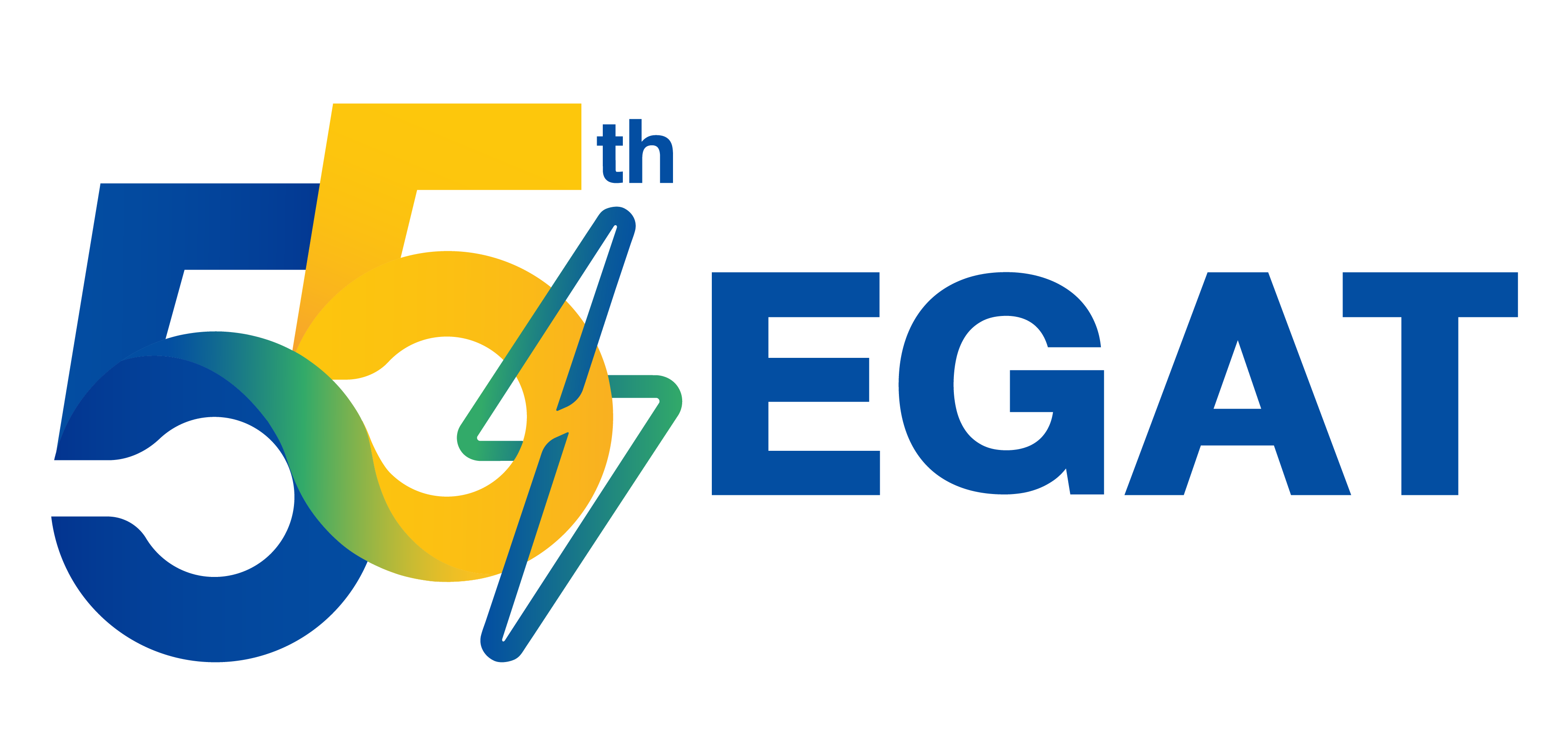The World’s Largest Hydro-Floating Solar Hybrid
1 July 2021The world regards renewable energy as clean power and it is a great alternative for electricity generation without an impact on environment. However, to generate electric power from renewable energy has limitations because it relies on weather condition. For example, solar cells can produce energy only when the light intensity is sufficient. Therefore, this kind of energy can still not be baseload power when compared to fossil fuel.
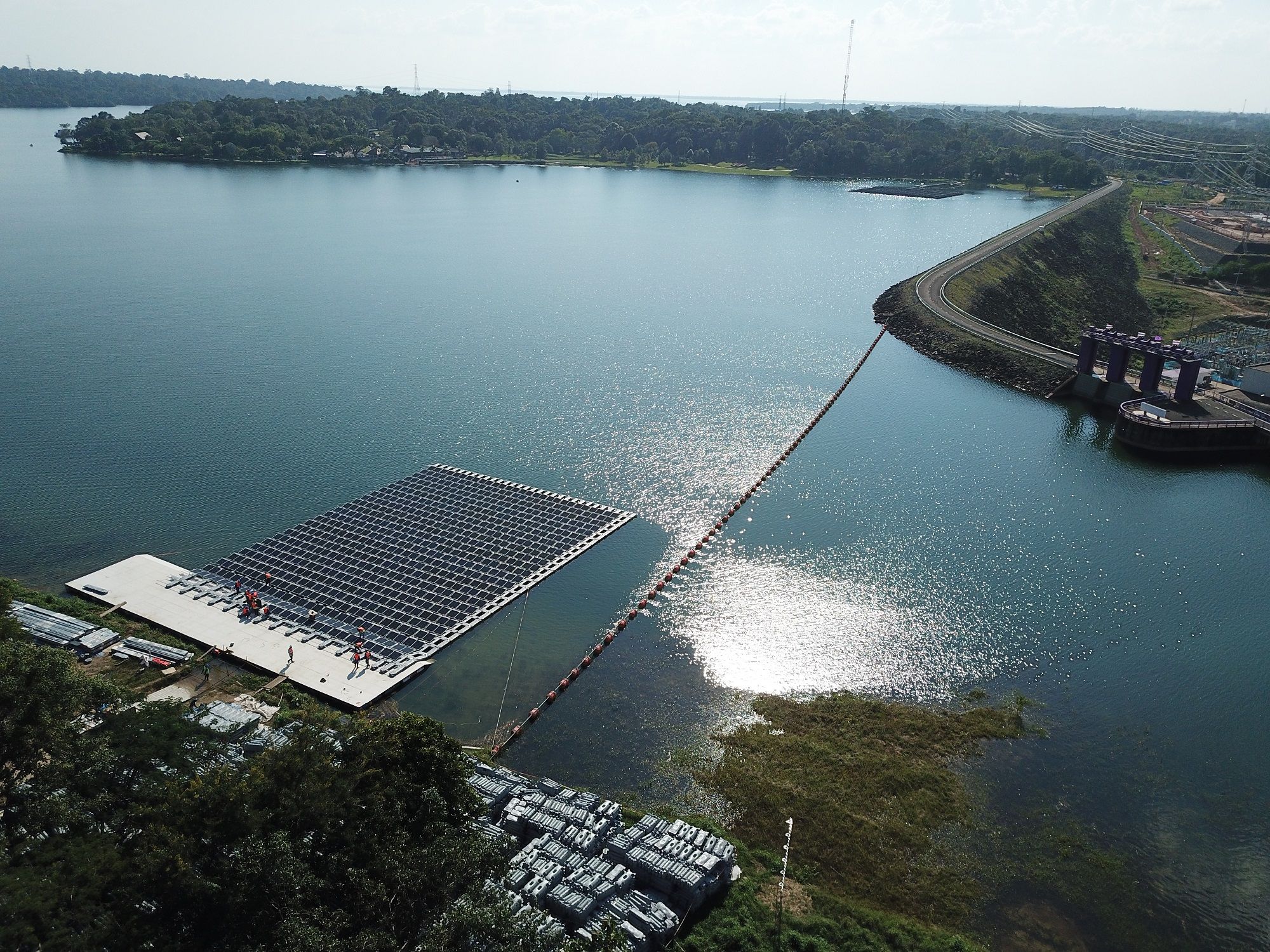
Today, the Electricity Generating Authority of Thailand (EGAT) has installed solar cells on the surface of water of EGAT dams. As a result, apart from generating electricity from solar power during the day, when the sunlight is unavailable, hydropower of the dam can be combined as a hybrid technology for electricity generation. EGAT is the first utility to combine floating solar power with hydropower for electricity generation.
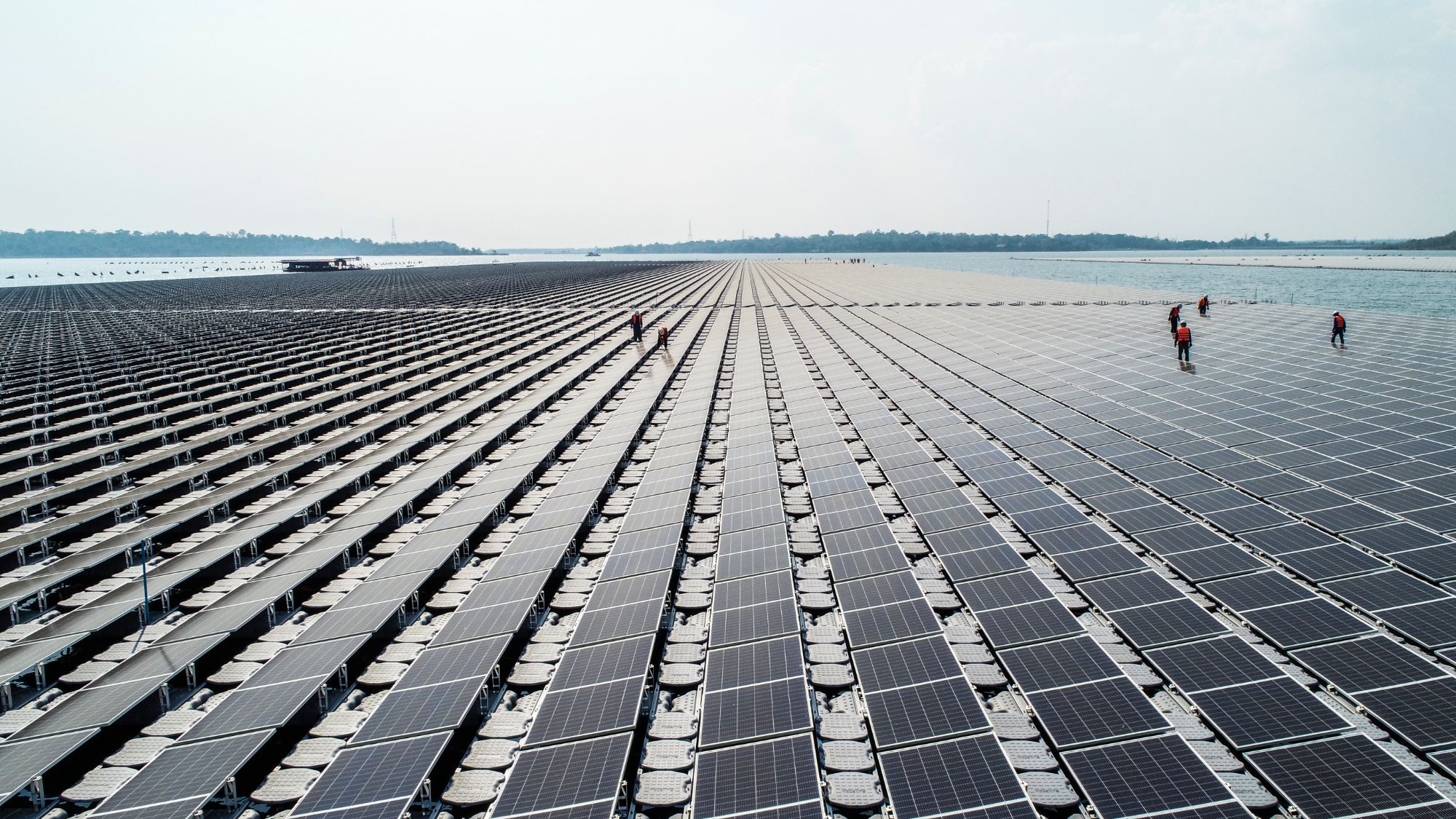
The strengths of the Hydro-Floating Solar Hybrid
1. Low cost due to its large generating capacity of more than 30 MW and the use of EGAT’s existing power system infrastructure, such as the transmission system, transformers, and the use of space for maximum benefit
2. Enhancing power system security with Integrated Renewable Firm Power System coupled with Energy Storage System
3. No impact on society, community, and environment
– By installing floating solar panels on the water surface of EGAT’s dams, it does not affect the agriculture area, the community’s boat route, and the daily life activities of the locals.
– Using environmental exploring and monitoring technologies, such as Geographic Information System and submarine robots
– Devices used to install floating solar panels are made from the same materials of plumbing pipes, which are friendly to the environment.
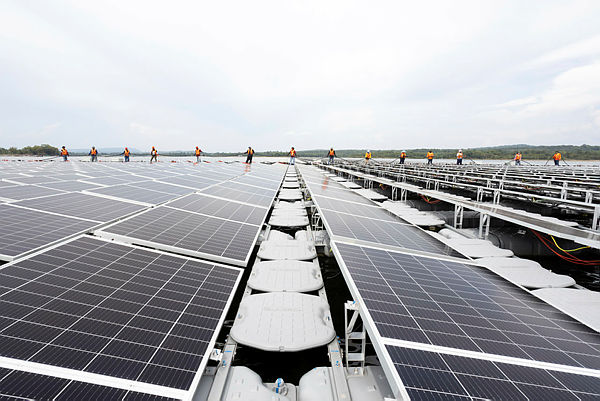
The working principles of the system enhance not only electricity system stability but also efficient water management for utmost benefits.
– When there is enough water, the dam can generate power to meet the system’s peak demand.
– When there is a limited amount of water, the solar cells can generate power from sunlight during the day, while hydropower will be used to support high power demand during nighttime. It can also generate hydroelectricity continuously with a few capacity to support the system’s power demand.
EGAT will install hybrid floating solar panels on the water surface of EGAT’s dams across the country. When the project is complete as planned, the total capacity of EGAT Hydro-Floating Solar Hybrid will be 2,725 MW.
EGAT Hydro-Floating Solar Hybrid Projects
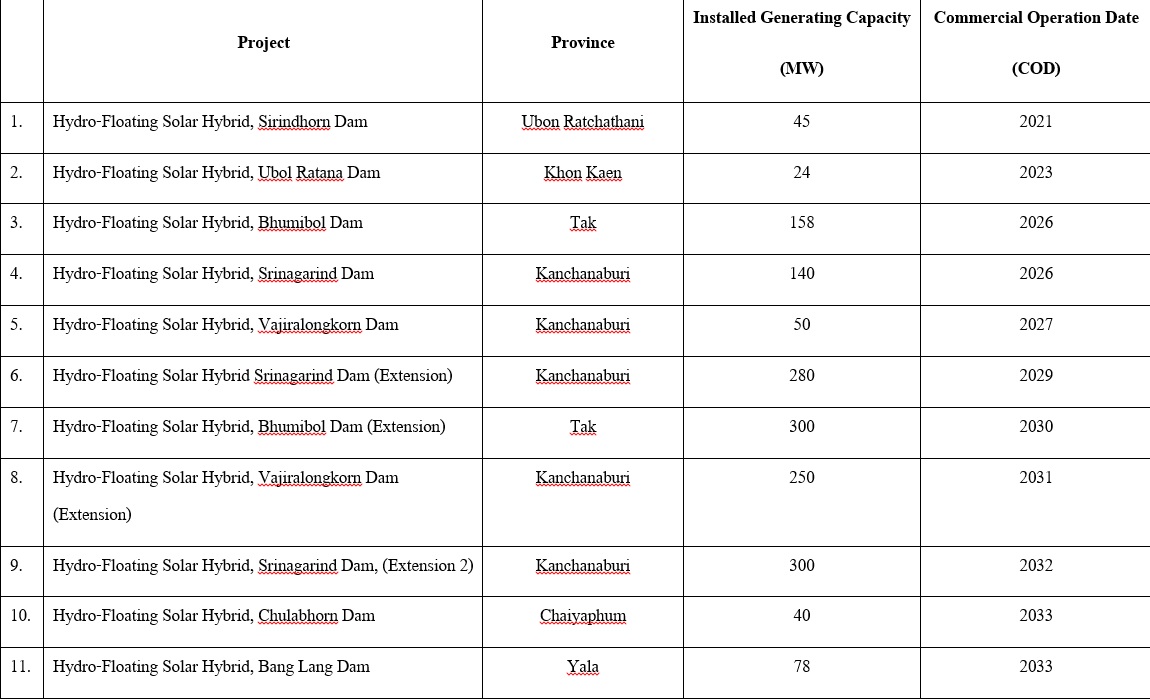

Hydro-Floating Solar Hybrid Project of Sirindhorn Dam, Ubon Ratchathani Province
It is a 45 MW pilot project of hybrid system development of floating solar panels in the reservoir of EGAT dams together with the hydropower system controlled by the energy management system (EMS) to generate electricity appropriately and increase flexibility in energy management. It is planned to start commercial operation on August 2021.
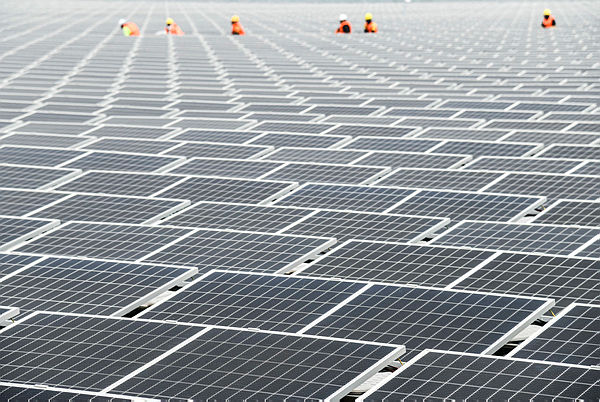
The Hydro-floating Solar Hybrid Project at Sirindhorn Dam uses double glass solar panels which are suitable for installing on water surface, made of glass on the top and bottom, highly resistant to moisture, and will not contaminate the water; therefore, they are safe and efficient for electricity generation. The mooring system is made from HDPE (High Density Polyethylene) which is the same material used in water supply pipes and resistant to degradation from ultraviolet light; therefore, it is not dangerous to aquatic animals or the environment. Most importantly, the project helps reduce CO2 around 47,000 tons/year.
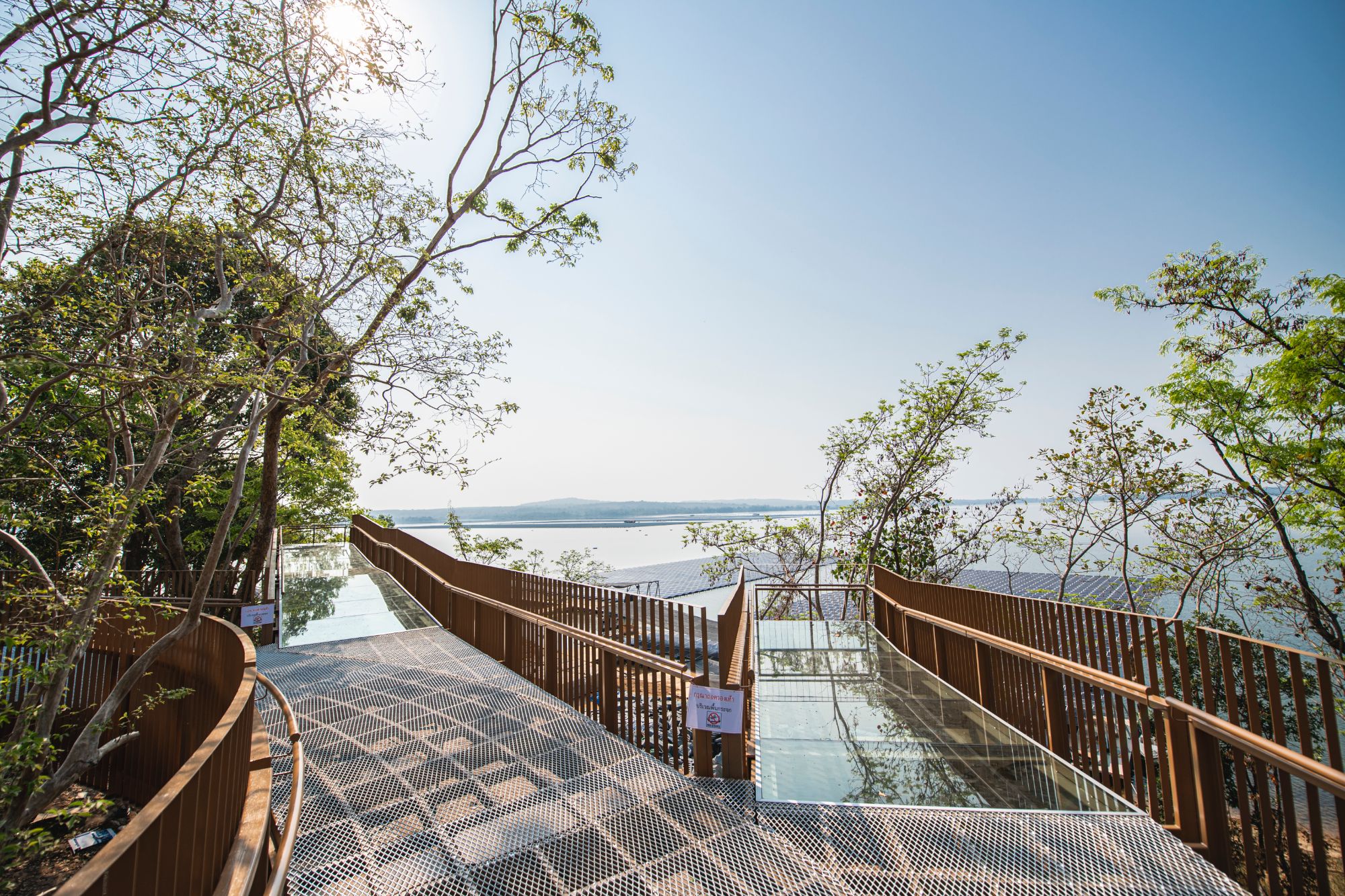
EGAT is also developing the project to be a learning center on renewable energy for students and general public. The 415 meters long Nature Walkway has been built as a new tourist attraction, which will open to public by the end of 2021. EGAT will provide the facilities for the tourists, including local product market, souvenir shop, bicycle-rental shop, tourist bus stops, rafting area, etc. It is expected that this new tourist destination will help stimulate tourism, generate come, and create jobs for the locals.
